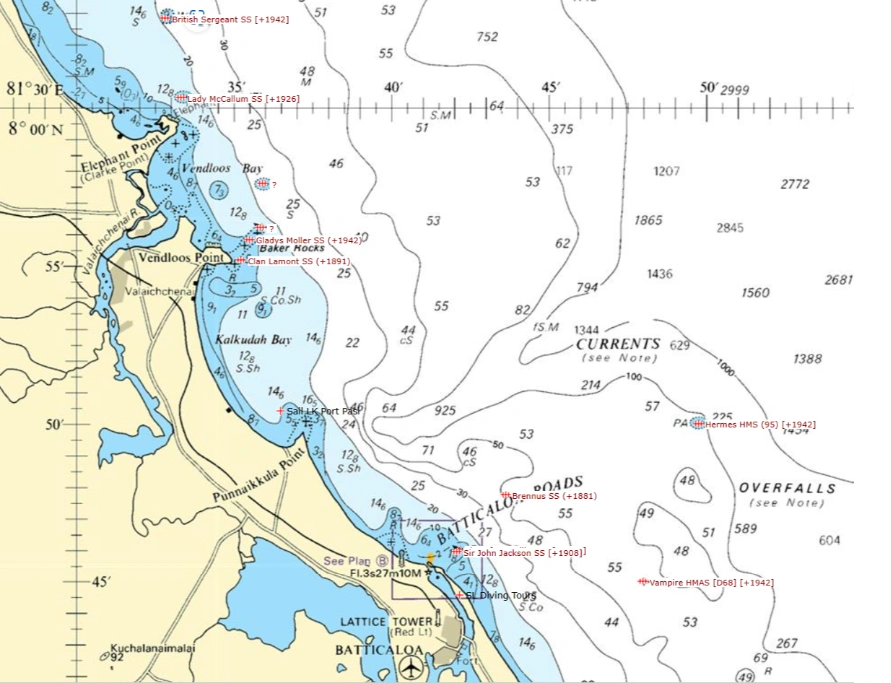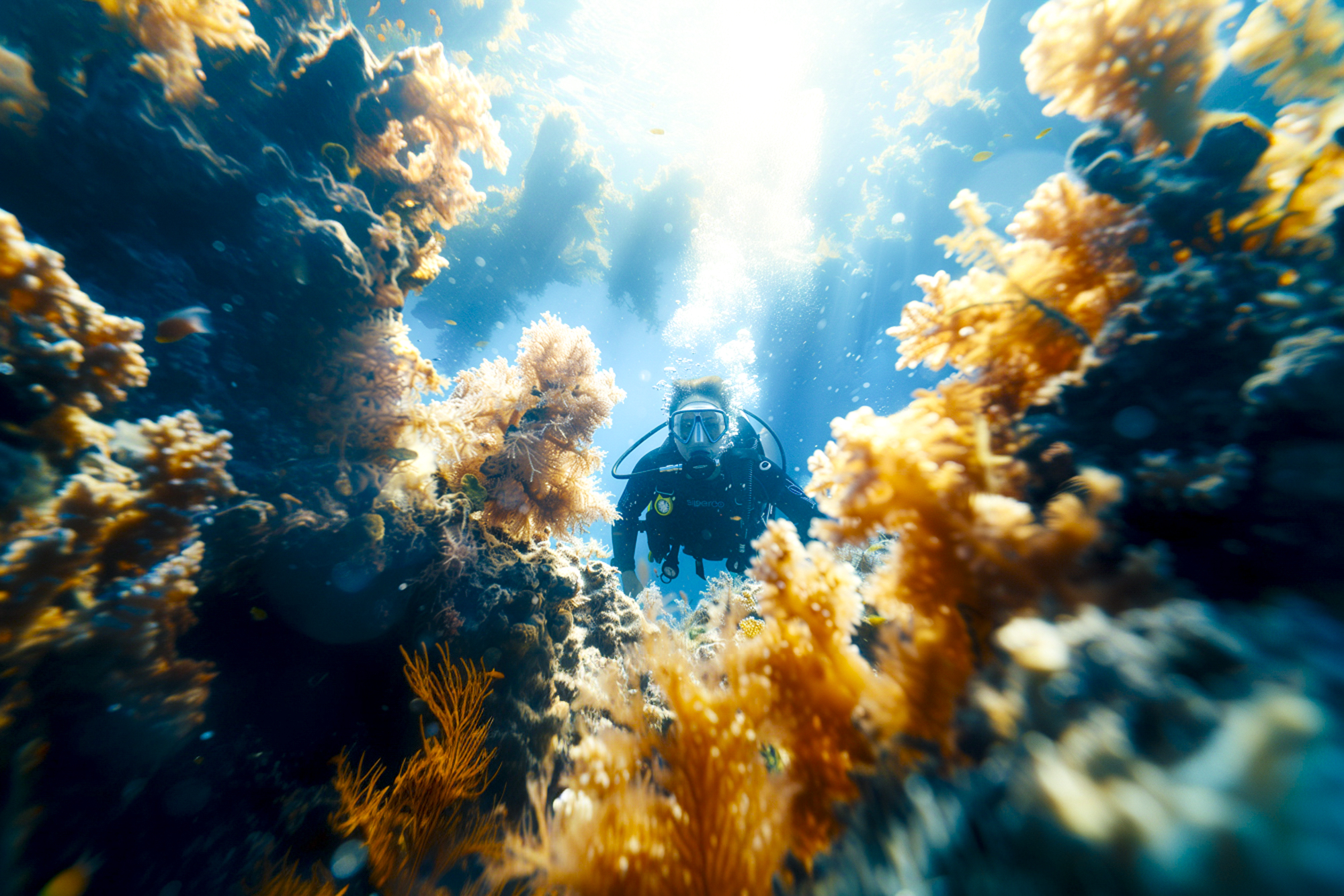
Itinerary
6 Days / 5 Nights | YACHT | WWII Adventure
Pasikuda
12 dives in total
Including 1 Night Dive
Trincomalee
Advanced Open Water - 15 minimum logged dives.
Deep Speciality - 7 minimum logged dives to 40m required.
Tec 40 Certification / Experiance with moving water of 1 knot.
Day 1:
- Arrival at Port Pasikuda, for boarding between 7:00 to 7:20 am.
- The yacht departs by 7:30 am.
- 3 dive opportunities onboard (including 1-night dive).
Day 2-5: Eat, Sleep & Dive The East Coast:
Start the day with breakfast followed by;
- 1 dive/snorkel sessions in the morning.
- 2 dive opportunities in the afternoon/evening (including 1-night dive for a total of 12 dives/in-water opportunities).
Day 6:
Start the day with breakfast followed by;
- 2 dive/snorkel sessions in the morning.
WWII Japanese Raid East of Ceylon
The Japanese during World War II on Thursday, 9th April 1942 bombed three British vessels The HMS Hermes, her escort HMAS Vampire and the SS British Sergeant between 0900hrs and 1100hrs. Sadly the wreck of the HMAS Vampire is yet to be found and believed to have sunk out of reach somewhere in the Continental Shelf!
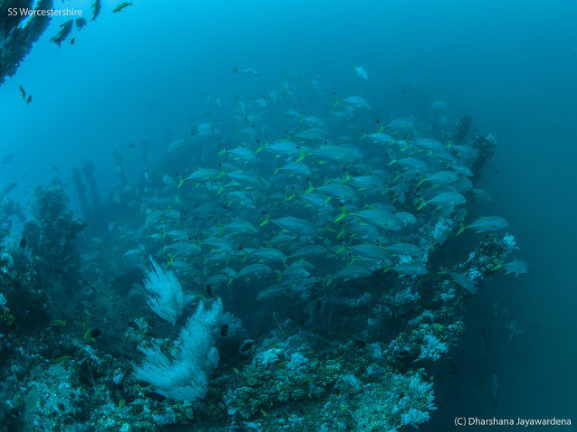
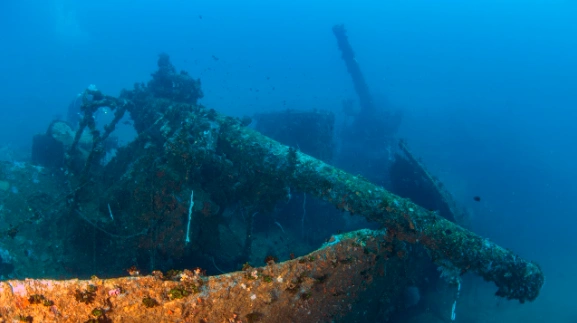
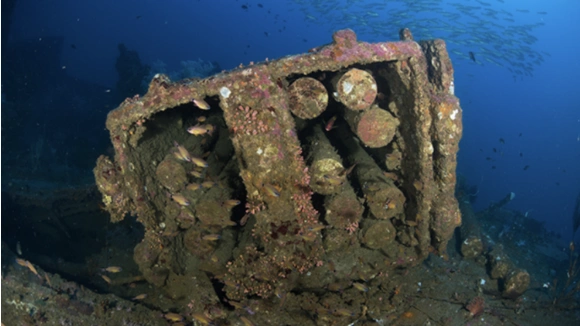
HMS Hermes (53m)
HERMES: Our flag ship of shipwrecks on the East of Sri Lanka.
The world’s first purpose-designed aircraft carrier, was sunk along with her escort HMAS Vampire.
Hermes is the only diveable aircraft carrier to have sunk in battle, while other such aircraft carriers of the same era were artificially sunk. Hence, the fact that the Hermes is an incredibly unusual, unique and intriguing world-class wreck in the world of technical diving at a depth of 53m. Out of 566 sailors, 307 lost their lives, and it is dedicated as a war memorial shipwreck.
Four other ships too met their fate on that day; The British Sergeant, SS Sagaing, HMS Hollyhock and the RFA Athelstane. A total of six ships in all were attacked by the Japanese from 0700hrs to 1430hrs and now rest at the bottom of our ocean.
The Hermes dive itself is spectacular despite deterioration. She rests on her port side between 42m at the hull and 53m sandy bottom.
Though designated and offered as a dedicated TEC dive in our package "The Hermes Adventure", in this package we give you the opportunity to dive the keel at the stern of the ship at 42m.
This dive is only for the very experienced due to the challenging conditions at the site. There is significant water movement, ranging from an average of 1 knot to strong water movements of up to 2 knots.
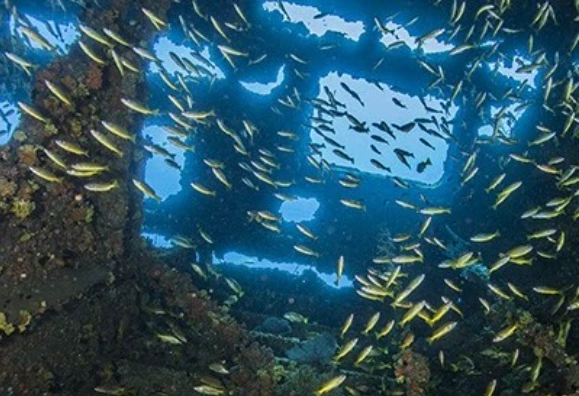
SS British Sergeant (24m)
SERGEANT: This massive tanker is a great dive for all levels of divers. The ship wreck also met her fate at the hands of the Japanese and lies at 24m, in two parts probably because of breakup whilst sinking.
The bow and the stern areas can be clearly distinguished. The highlight of the ship is the massive cavern amidship and another at the start of the aft which when inside, looks like a cathedral.
WWII at the Edge of the Continental Shelf
Two world class dives near a deep drop off at the edge of the continental shelf! Recommended for Technical Divers.

HMS Hollyhock (42m)
UHOLLYHOCK: The British Royal Navy Flower Class Corvette HMS Hollyhock, escort to MFA Athelstane was sunk to a depth of 42m with 53 casualties (14 survivors) at 1218hrs. The bombs inflicted severe damage to the hull as it was reported that she sunk in a few minutes, due to multiple bombs going down her funnels.
A scenic dive site consisting of a small wreck lying on white sand and at most times, surrounded by clear blue water. Marine life consisting of soft coral, schools of fish and the occasional stingray or eagle ray can be seen.
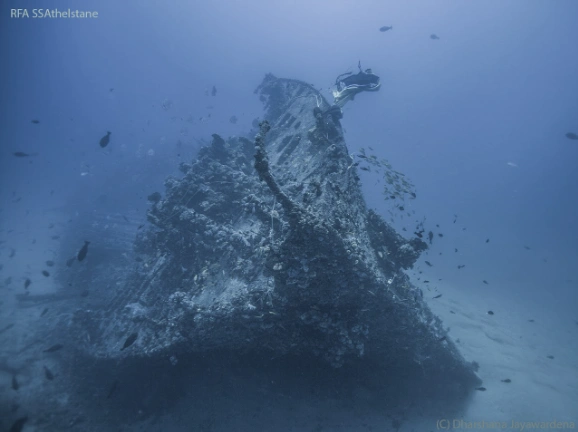
MFA Athelstane (42m)
ATHELSTANE: The last ship to be sunk by the Japanese bombing at 1430hrs. The Athelstane sank two hours after the HMS Hollyhock and in the same vicinity. One bomb exploded in oil tank 3, splitting the ship at the stern side. No hands were lost and the entire crew rescued the last surviving members of the Hollyhock in just two of the four life boats onboard the Athelstane.
"She was a merchant tanker on charter or requisitioned by the Admiralty".
The site consists of lush marine life. Eagle rays, giant trevally and dogtooth tuna are seen often about the wreck. The stern of the ship hosts a large mounted gun. A boiler and exposed triple-expansion engine can be seen amidship. In addition, the bridge and fore sections provide great opportunity for exploration.
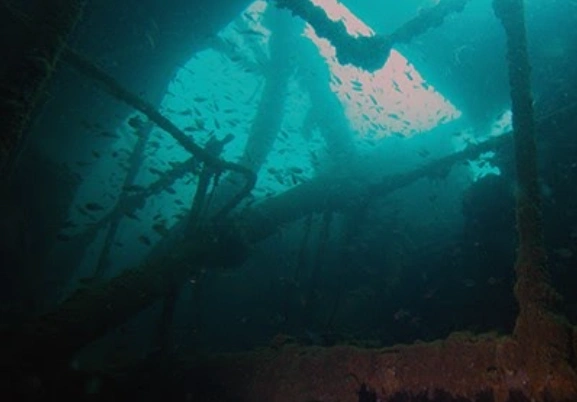

SS Sagaing (20m)
SAGAING: The Sagaing (AKA: Saigang) was berthing at the munitions anchorage at Malay Cove Trincomalee and awaiting orders for the unloading of the war cargo of disassembled Hawker Hurricanes, assorted ammunition, mines and about 2300 depth charges, mostly stored above deck; this was in addition to a regular cargo of 20,000 cases each of Allsopp beer and Johnnie Walker Red Label whiskey.
Following a series of false alarms of a Japanese attack, an all-clear signal was given on the morning of April 9 th. A short while later a Japanese aircraft appeared with no warning, bombing the harbour. The Sagaing was struck both fore and aft in the first of three bombing runs. Incapacitated and ablaze, she slowly drifted towards the shore of Malay Cove. Most of the undamaged munitions and aircraft onboard were rescued.
On August 24, 1943, the hulk of the ship was shelled and sunk deliberately by order of the Government of Ceylon for use as a pier at the Sri Lanka Navy (SLN) Dockyard. The wreck was refloated March 22, 2018 by the SLN, moved out of the harbour's vicinity and laid to rest on March 30, 2018 at a depth between 10m to 20m.
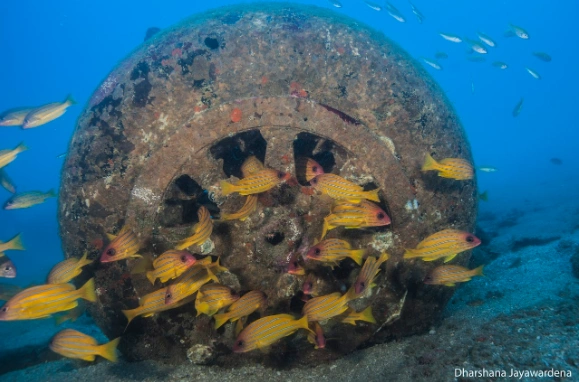
Consolidated PBY-5A Catalina - Y78 (42m)
CATALINA: Explorer and author Dharshana Jayawardena, unravels the mystery of this aircraft wreckage found off the coast of Kalkudah in the east coast of Sri Lanka in his book "Ghosts of the Deep".
The Y78/RAF Dutch Squadron 321, departed RAF Sigiriya for an eighteen-hour patrol mission in search of a Japanese submarine in the Bay of Bengal, 9th December 1943. Engine failure forced the crew to carry out a night landing at sea that subsequently sank within an hour.
The wreckage was found by a local fisherman in 2014 and parts of the aircraft were recovered.
This scenic dive site at a depth of 42m, is full of marine life and contains wings, wheels with parts of the undercarriage, propellers and engines. It is an intriguing dive site to explore and discover.
Our maximum depth for recreational dives is limited to 30 meters.
Night, deep and decompression dives deeper than 18 meters are available to divers with such specialised certification only.
Diving with a computer is mandatory, and solo diving it is not permitted.
Divers are recommended to wait for 24 hours before flying after their last dive.
The exact route and sites visited are subject to change based on local regulations, guest experience, weather, and logistics and are at the Captain's discretion.
All maps are for illustrative purposes only.
